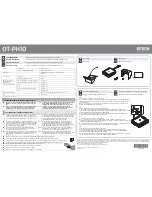
Dell SonicWALL Secure Mobile Access 8.5
Administration Guide
480
NetExtender FAQ
1 Does NetExtender work on other operating systems than Windows?
Answer
: Yes. See the following supported platforms:
Mac Requirements:
•
Mac OS X 10.6.8+
•
Apple Java 1.6.0_10+ (can be installed/upgraded by going to
Apple Menu > Software Update
;
should be pre-installed on OS X 10.6.8+)
Linux Requirements:
•
i386-compatible distribution of Linux
•
Sun Java 1.6.0_10+
•
Fedora 14+
•
Suse: Tested successfully on 10.3
•
Ubuntu 11.04+
Separate NetExtender installation packages are also downloadable from mysonicwall.com for each
release.
2 Which versions of Windows does NetExtender support?
Answer
: NetExtender supports:
•
Vista SP2
•
Windows 10
•
Windows 7
3 Can I block communication between NetExtender clients?
Answer:
Yes, this can be achieved with the User/Group/Global Policies by adding a ‘deny’ policy for the
NetExtender IP range.
4 Can NetExtender run as a Windows service?
Answer
: NetExtender can be installed and configured to run as a Windows service that allows systems to
log in to domains across the NetExtender client.
5 What range do I use for NetExtender IP client address range?
Answer
: This range is the pool that incoming NetExtender clients are assigned – NetExtender clients
actually appear as though they are on the internal network – much like the Virtual Adapter capability
found in Dell SonicWALL’s Global VPN Client. You should dedicate one IP address for each active
NetExtender session, so if you expect 20 simultaneous NetExtender sessions to be the maximum, create
a range of 20 open IP addresses. Make sure that these IP addresses are open and are not used by other
network appliances or contained within the scope of other DHCP servers. For example, if your SMA/SRA
appliance is in one-port mode on the X0 interface using the default IP address of 192.168.200.1, create a
pool of addresses from 192.168.200.151 to 192.168.200.171. You can also assign NetExtender IPs
dynamically using the DHCP option.
6 What do I enter for NetExtender client routes?
Answer:
These are the networks that are sent to remote NetExtender clients and should contain all
networks that you wish to give your NetExtender clients access to. For example, if your SMA/SRA
appliance was in one-port mode, attached to a Dell SonicWALL NSA 3500 appliance on a DMZ using
192.168.200.0/24 as the subnet for that DMZ, and the Dell SonicWALL NSA 3500 had two LAN subnets of
192.168.168.0/24 and 192.168.170.0/24, you would enter those two LAN subnets as the client routes to
provide NetExtender clients access to network resources on both of those LAN subnets.
















































